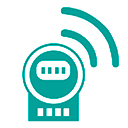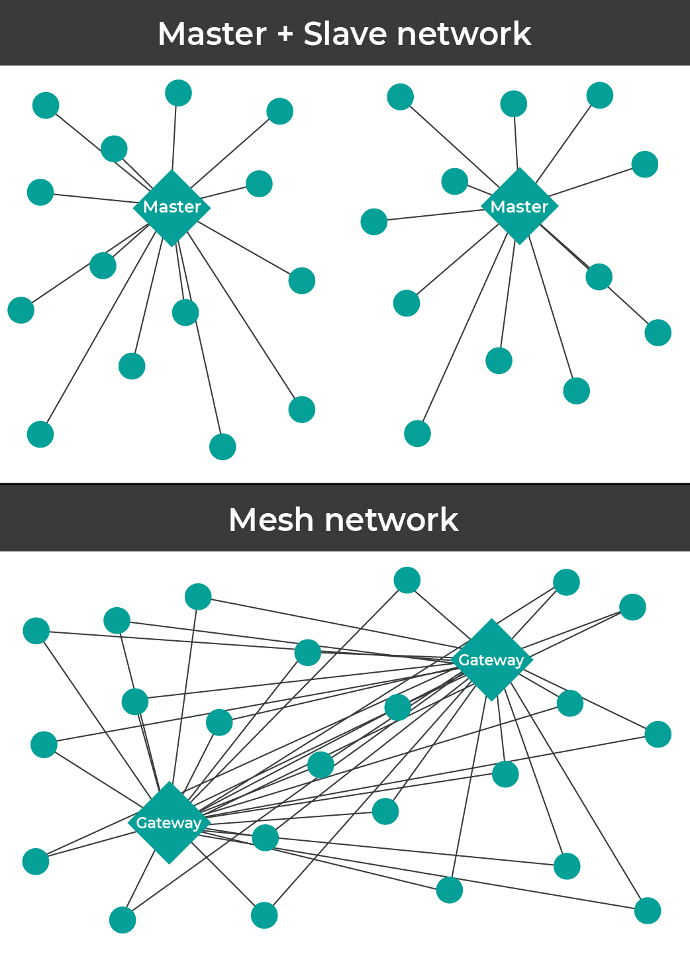What is Wireless M-Bus?
The Wireless M-Bus (WM-Bus) is a cost-effective communication technology that has been specially developed for the remote reading of meter data such as water, gas, electricity and heat meters. It is based on the European standard EN 13757-4 and offers secure and energy-saving wireless data transmission. IoT technology is the most widely used standard for wireless metering systems in Europe.
Typical applications for wireless M-Bus

Submetering
Remote reading of electricity, gas and water meters

Industrial IoT (IIoT)
Monitoring systems and machines
Building digitalisation
Control and monitoring of HVAC systems and energy management
Wireless M-Bus compared to other technologies
WM-Bus is particularly strong in applications that require secure and efficient transmission of measurement data. Compared to other IoT communication technologies such as Mioty, LoRaWAN or NB-IoT, WM-Bus offers specific advantages in energy efficiency and network coverage in dense urban or underground environments, making it ideal for utility metering applications. However, WM-Bus is less versatile compared to broader technologies such as LoRaWAN, which can support a wider range of IoT applications.

Is M-Bus and Wireless M-Bus the same thing?
Data transmission: M-Bus and Wireless M-Bus (WM-Bus) are two variants of one communication protocol.
While M-Bus is a wired technology, WM-Bus is the wireless alternative. The star topology is common for both technologies, as the master centrally controls the slaves, which enables efficient data collection and is well suited to smart metering applications.
M-Bus is a wired communication interface developed specifically for the transmission of consumption data in buildings.
Wireless M-Bus (WM-Bus) on the other hand uses radio waves for the wireless transmission of measured values and sensor data.
Connection:
M-Bus is a wired communication system that uses a two-wire cable to transmit both data and energy. It provides a reliable and low-interference connection that is ideal for fixed installations in buildings.
WM-Bus is a radio-based communication system that transmits data over various frequency bands (usually 868 MHz).
Reliability and energy consumption:
M-Bus offers a high degree of reliability, especially in fixed infrastructures with secure cabling. The continuous power supply makes it ideal for stationary systems that require a permanent connection.
WM-Bus, on the other hand, is optimized for low energy consumption and is particularly suitable for battery-powered measuring instruments, which can often be operated for several years without changing the battery. Since WM-Bus is wireless, measuring instruments can be installed more flexibly and integrated more easily into existing systems.
Overall, M-Bus and WM-Bus can also be used in complementary roles within the same metering system, with M-Bus being used for wired connections and WM-Bus for the wireless segments, and both technologies are specified in the European standard EN 13757, which sets out guidelines for communication systems for meters and their remote reading. This enables flexible adaptation to the given infrastructural conditions.
Is WM-Bus the right technology for you?
Feel free to contact us if you would like to discuss your specific application conditions and find out which IoT technology is best suited to your requirements.
Limitations of the WM-Bus technology
Scalability and flexibility: WM-Bus is mainly designed for well-defined use cases such as metering and offers less flexibility compared to other wireless technologies such as LoRaWAN or NB-IoT, which can support a wider range of IoT applications.
Standardisation and compatibility: As WM-Bus is strongly focused on Europe and specific use cases, there may be challenges with integration with global systems or compatibility with other technologies that do not follow the same standardisations.
Range: WM-Bus is mainly designed for medium ranges, typically inside buildings or small to medium-sized outdoor areas. In contrast, technologies such as LoRaWAN and NB-IoT offer a significantly greater range and can transmit data over several kilometres, even in difficult environments.
Network topology: WM-Bus typically works in a simple star topology, where all end devices communicate directly with a central collection point. A technology such as LoRaWAN offers additional possibilities for a mesh network topology, which enables more extensive and more robust network coverage.

Which wireless M-Bus hardware devices are available?
There is a large selection of hardware with NB-IoT technology in our online shop iot-shop and more is being added all the time. Take a look around and see for yourself!

